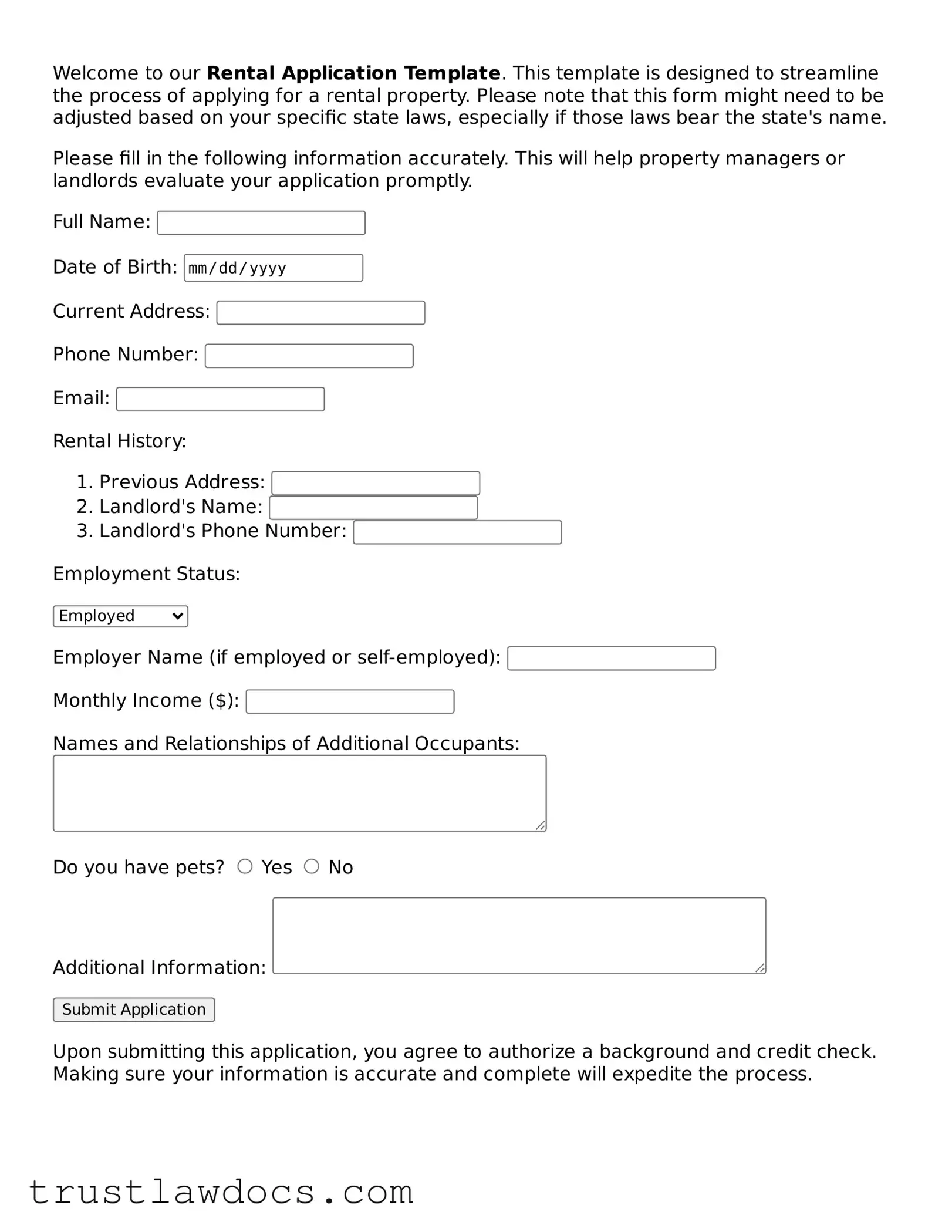What is a Rental Application Form?
A Rental Application Form is a document used by landlords or property managers to gather information from potential tenants. It typically includes sections for personal information, rental history, employment status, and sometimes a credit check authorization. This form helps the landlord assess whether the applicant would be a reliable tenant.
Why do I need to fill out a Rental Application Form?
Filling out a Rental Application Form is the first step in applying for a rental property. It lets the landlord know you're serious about renting and provides them with the necessary information to determine if you meet their rental criteria. It's an essential part of the leasing process, ensuring that the landlord has a comprehensive understanding of your background and financial stability.
What kind of information do I need to provide on the Rental Application Form?
Generally, you'll be asked to provide personal information such as your full name, date of birth, current and previous addresses, and contact information. Additional details may include your employment history, income verification, references from previous landlords or employers, and consent to perform background and credit checks. Accuracy and honesty in providing this information are crucial for a smooth application process.
Is my information safe when I submit a Rental Application Form?
Landlords and property managers are expected to handle your information with care and respect your privacy. They should have measures in place to protect your sensitive information, such as securing paper forms in locked files or using encrypted digital forms. However, it's always a good idea to ask how your information will be used and how it will be stored before submitting the form.
What happens after I submit my Rental Application Form?
After submission, the landlord or property manager will review your application, which may include verifying your employment, conducting background and credit checks, and contacting references. They will assess all collected information to decide if you meet their criteria for tenancy. The process can take a few days to a week, depending on various factors. If your application is approved, they will contact you to discuss the next steps, which typically involve signing a lease agreement.
Can I be charged a fee to submit a Rental Application Form?
Yes, it's common for landlords or property managers to charge a fee to process your Rental Application Form. This fee covers the cost of background and credit checks. The amount can vary depending on the location and the landlord. It's important to note that this fee is usually non-refundable, even if you're not selected as a tenant, so make sure you're seriously interested in the property before submitting an application and paying the fee.
